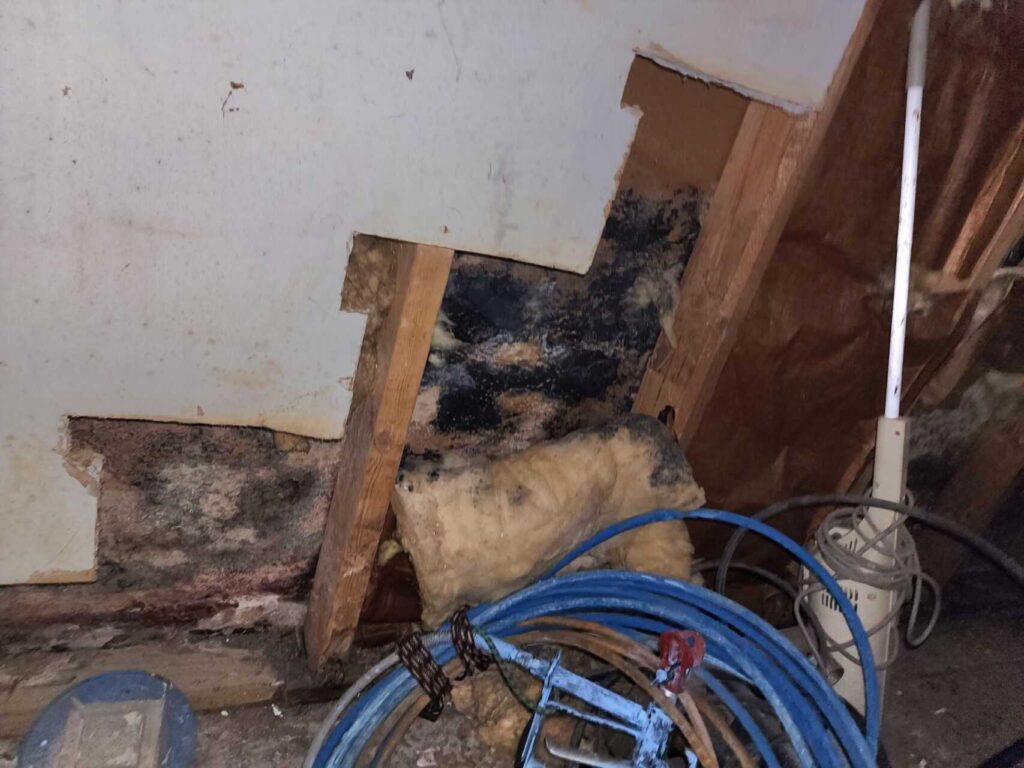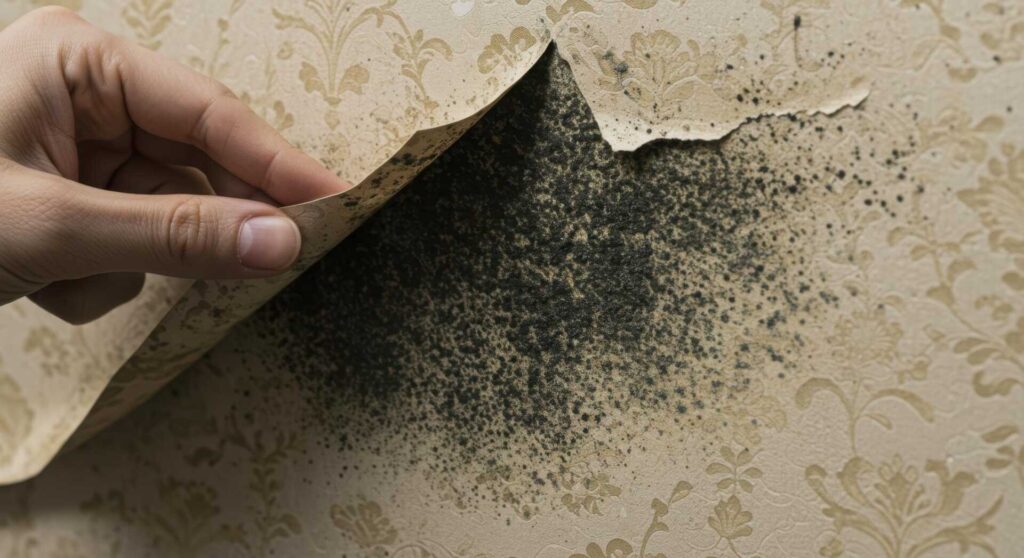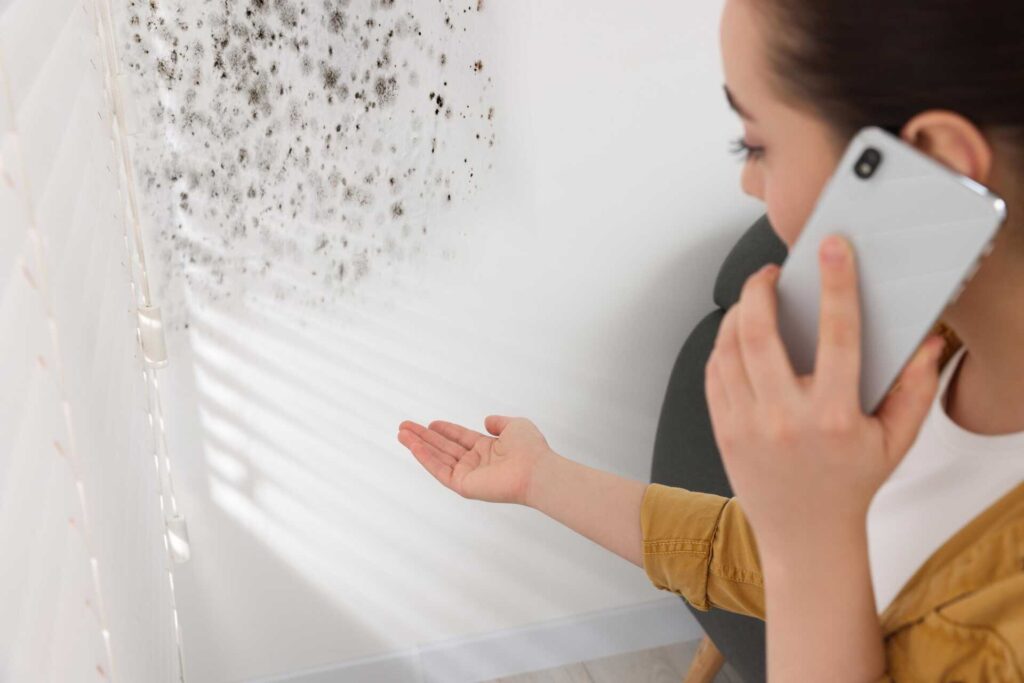
Contents
When water damage occurs, addressing mold growth promptly is crucial. You’ll need to assess the damage, remove standing water quickly, and ensure thorough drying of all affected areas. Implementing effective cleaning and disinfecting methods is important, along with using mold inhibitors. Understanding these strategies can greatly reduce the risk of future mold issues. To effectively manage this process, let’s explore each step in detail and how they contribute to a healthier environment.
Key Takeaways
- Identify and eliminate the moisture source immediately to prevent further mold growth after water damage occurs.
- Use a wet/dry vacuum or submersible pumps to remove standing water efficiently within 24-48 hours.
- Thoroughly dry affected materials and promote airflow by using fans and dehumidifiers to control humidity levels.
- Clean contaminated surfaces with a mixture of water and detergent, and apply EPA-approved disinfectants to inhibit mold growth.
- Educate household members on mold prevention strategies and conduct regular inspections to catch moisture issues early.
Assessing the Extent of Water Damage
When you discover signs of water damage, evaluating the extent is essential for effective mold remediation. Start by identifying the source of moisture, as understanding where the water came from helps in determining its impact.
Check surfaces, such as walls, floors, and ceilings, for discoloration, warping, or peeling paint, which indicate deeper issues. Use a moisture meter to assess humidity levels in affected areas; readings above 15% can signal potential mold growth.
Examine hidden spaces, like behind appliances or inside cabinets, as water can seep into these areas and foster mold development. Document your findings with photographs and detailed notes to create a thorough assessment.
This information will guide the remediation process, ensuring you address all affected areas. By thoroughly evaluating the damage, you’ll set the foundation for effective mold remediation, creating a healthier environment for you and your loved ones.
Immediate Water Removal Techniques
After evaluating the extent of water damage, the next step is to implement immediate water removal techniques to mitigate mold growth.
Quick action can greatly reduce the impact of water damage and prevent mold from taking hold. Here are effective methods you can employ:
Use a Wet/Dry Vacuum: These are essential for removing standing water from floors and carpets.
Mop Up Excess Water: After vacuuming, use mops and towels to soak up any remaining moisture.
Utilize Sumps and Pumps: For larger volumes of water, consider submersible pumps to expedite removal.
Remove Water-Damaged Items: Discard items that can’t be salvaged, as they can harbor mold.
Check Hidden Areas: Inspect behind appliances and under furniture for trapped water.
Ventilation and Drying Strategies
To effectively address mold issues, you need to implement proper ventilation and drying strategies.
Focus on establishing effective airflow techniques and utilizing dehumidification methods to reduce moisture levels.
Additionally, consider natural ventilation options to enhance air circulation and promote quicker drying.
Effective Airflow Techniques
Effective airflow techniques are vital for successful mold remediation, as they facilitate proper ventilation and drying of affected areas. By ensuring that air circulates effectively, you can greatly reduce moisture levels, which are essential for mold growth.
Here are some techniques to take into account:
Open windows and doors to promote cross-ventilation.
Use fans strategically to enhance air movement.
Create negative pressure in the affected area to draw out moist air.
Utilize exhaust fans in bathrooms and kitchens to remove humid air.
Seal off unaffected areas to concentrate airflow where it’s needed most.
Implementing these strategies will help you achieve a drier environment, ultimately minimizing the risk of mold proliferation.
Dehumidification Methods
While ensuring proper airflow is essential, employing effective dehumidification methods is equally important for successful mold remediation.
Start by using dehumidifiers to actively reduce humidity levels in affected areas. Position them strategically to maximize moisture extraction.
Combine this with heat sources, like fans or space heaters, to accelerate drying. Confirm you monitor humidity levels regularly with hygrometers to maintain ideal conditions—ideally below 60%.
In addition, consider utilizing air movers to facilitate airflow and further enhance drying efficiency.
Keep in mind that consistent monitoring and adjusting your approach based on real-time conditions will considerably improve your results.
Natural Ventilation Options
Natural ventilation options play an essential role in mold remediation, as they help to reduce indoor humidity and promote drying.
Implementing these strategies can greatly enhance air circulation and create a healthier environment.
Here are some effective natural ventilation techniques:
Open windows and doors: Allow fresh air to flow in and carry moisture out.
Utilize exhaust fans: Position fans in high-moisture areas like kitchens and bathrooms.
Create cross-ventilation: Open windows on opposite sides of a room to improve airflow.
Use ceiling fans: Circulate air to maintain consistent temperature and humidity levels.
Install vents: Incorporate vents in walls or ceilings to facilitate air movement.
Cleaning and Disinfecting Affected Areas
To successfully clean and disinfect areas affected by mold, you need to follow a systematic approach that ensures complete removal and prevents future growth.
Start by wearing appropriate personal protective equipment, such as gloves, masks, and goggles, to safeguard your health.
Next, identify all contaminated surfaces, including walls, floors, and furniture.
Use a mixture of water and detergent to scrub away visible mold.
For porous materials like drywall or carpeting, you may need to remove and replace them if they’re extensively contaminated.
After cleaning, apply a disinfectant specifically designed for mold removal, making sure it meets EPA guidelines.
Allow the disinfectant to sit for the recommended dwell time to confirm effectiveness.
Finally, ventilate the area to promote drying, as moisture control is essential in preventing mold recurrence.
Using Mold Inhibitors and Treatments
Using mold inhibitors and treatments is essential for long-term prevention after you’ve cleaned and disinfected affected areas.
These products help eliminate mold spores and create an environment that discourages future growth. Here are some effective options to evaluate:
- Boric Acid: A natural compound that acts as a powerful fungicide.
- Chlorine Bleach: Effective for non-porous surfaces, but use cautiously.
- Vinegar: An eco-friendly option that can kill many types of mold.
- Mold-Resistant Paints: These paints contain additives that prevent mold growth on walls.
- Commercial Mold Inhibitors: Formulated specifically to inhibit mold and mildew growth.
Incorporating these treatments into your mold remediation strategy can greatly enhance the resilience of your home against future infestations.
Doing so fosters a safe, healthy environment for you and your loved ones, reinforcing the importance of proactive maintenance.
Repairing and Replacing Damaged Materials
Repairing and replacing damaged materials is essential in restoring your home after a mold infestation. First, identify the materials affected by moisture and mold, such as drywall, insulation, or flooring. Remove any irreparable items, ensuring you follow safety protocols, like wearing protective gear.
Next, treat the surrounding areas with mold inhibitors to prevent future growth before installing new materials. When replacing, opt for mold-resistant products designed for high-moisture environments. This includes using moisture-resistant drywall and treated wood to enhance durability.
Once you’ve replaced the damaged materials, ensure proper ventilation and humidity control to maintain a healthy indoor environment. Regularly inspect these areas to catch any potential issues early.
Preventative Measures for Future Incidents
Although mold can thrive in various environments, implementing effective preventative measures can greatly reduce the risk of future incidents.
By taking proactive steps, you’ll create a healthier living space and foster a sense of community among your loved ones.
Here are five key strategies to evaluate:
Control Humidity: Maintain indoor humidity levels between 30-60% using dehumidifiers or air conditioning.
Ensure Proper Ventilation: Use exhaust fans in kitchens and bathrooms to remove moisture effectively.
Inspect for Leaks: Regularly check pipes, roofs, and windows for signs of water leaks and address them promptly.
Choose Mold-Resistant Materials: When renovating, opt for mold-resistant paint and drywall in moisture-prone areas.
Conduct Routine Inspections: Periodically inspect your home for mold growth and moisture issues, especially after heavy rain.
Summary
In the battle against mold, remember that “an ounce of prevention is worth a pound of cure.” By swiftly addressing moisture, removing water, and ensuring thorough drying, you can considerably reduce the risk of mold growth. Regular inspections and using mold-resistant materials will help protect your home in the long run. Stay vigilant and proactive in your mold remediation efforts to maintain a healthy living environment and prevent future incidents.

